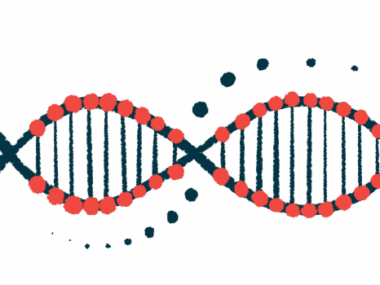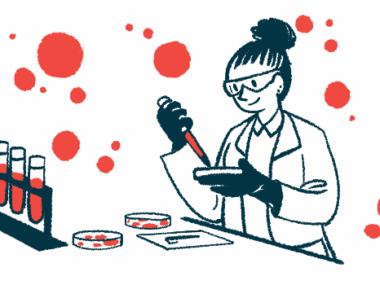121 new AADC deficiency cases found across globe during study
Researchers ID 26 novel DDC gene mutations linked to rare disease
Written by |

An international team of researchers have reported 121 new cases of aromatic L-amino acid decarboxylase (AADC) deficiency and identified 26 novel disease-associated mutations in the DDC gene.
Among the nearly 350 reported cases of AADC deficiency globally — including the 121 new ones — the vast majority of DDC mutations were estimated to be likely, if not definite, contributors to the rare disease.
“We hope this study will add to the current understanding of the genetic background of AADC deficiency,” the researchers wrote.
The study, “Prevalence of DDC genotypes in patients with aromatic L-amino acid decarboxylase (AADC) deficiency and in silico prediction of structural protein changes,” was published in Molecular Genetics and Metabolism.
Researchers seek more data on DDC gene mutations
AADC deficiency is an extremely rare inherited condition typically caused by mutations in both copies of the DDC gene. Such mutations lead to low levels of the AADC enzyme or the production of a faulty enzyme in patients.
Given the enzyme’s key role in the production of important brain signaling molecules, the disorder causes a wide range of severe neurologic symptoms that start early in life. It can be diagnosed through blood or genetic testing, or via tests of a person’s spinal fluid.
“The condition is thought to be more prevalent in certain Asian populations, particularly Taiwan, China, and Japan, due to the founder variant c.714 + 4A > T,” the researchers wrote.
A total of 581 different mutations have been identified throughout the DDC gene in humans. The largest percentage of these mutations (48%) are missense variants, meaning they lead to a change in a single amino acid, protein’s building blocks, in a particular position of the resulting protein.
Some of the reported mutations may have a damaging effect on the AADC enzyme, and thereby be classified as pathogenic or disease-causing. Others, meanwhile, could be benign and not drive AADC deficiency.
Now, an international team of researchers set out to estimate the total number of AADC deficiency patients worldwide and to learn more about disease-associated mutations. Their target were any cases of confirmed AADC deficiency among patients with available genetic information.
These cases were either identified through a search of reports published in the literature — for the years from January 1990 through January 2023 — or provided by the researchers involved in the study (unpublished cases).
Ultimately, 348 patients were included in the analysis, “121 (35%) of whom were previously not reported in the literature,” the researchers wrote.
A total of 143 DDC mutations and 151 different genotypes, or combinations of the two copies of the DDC gene, were identified in these patients.
Nearly half of the patients (48%) had a homozygous genotype, meaning they carried the same mutation in both copies of the DDC gene, while the remaining 52% had a compound heterozygous genotype. These individuals carried a different mutation in each copy of the gene.
A total of 15 genotypes (10%) were found in about half of all patients. This was mostly due to the fact that the c.714+4A>T mutation, which is prevalent in Taiwan and China, was the most commonly observed mutation (32.4%), and its presence in both DDC copies comprised the most common genotype (21.3%).
Moreover, 26 new DDC mutations were identified, 19 of which were missense variants. They were examined for whether they were likely to be pathogenic.
Such a validated analysis considers a number of factors, including the type of mutation, its predicted structural and functional effects on the protein, and whether it’s also found in healthy people. Researchers also evaluate evolutionary conservation, or how similar that particular spot of DNA is across several animal species.
Most of these new mutations (about 85%) were classified as pathogenic or likely pathogenic, while the effect of the remaining four (about 15%) was unclear.
90% of all patient genotypes had 2 DDC gene mutations of concern
Overall, in the whole patient population, 90% of all genotypes contained a combination of two pathogenic or likely pathogenic mutations. Most of the remaining genotypes were comprised of at least one mutation of unknown significance; only one genotype contained a benign mutation, which was combined with a pathogenic variant (c.1040G > A)
The scientists also categorized the mutations based on what the predicted effects would be on the AADC enzyme.
About 14% of the 41 homozygous genotypes (27% of the total) analyzed for effects on the enzyme resulted in no AADC protein being produced and were disease-causing. Most of the remaining led to a poorly working version of the protein, being classified as pathogenic or likely pathogenic.
It was harder to predict the effects on the enzyme for the 110 compound heterozygous genotypes analyzed (73% of the total), the researchers noted, adding that the effects of the two different mutations could possibly interact.
Still, the team developed a model to predict how severely affected the enzyme would be with each genotype. Again, most were estimated to be damaging.
Our study documents that approximately 35% of AADC-deficient patients were not previously reported and many more are likely to not have a final diagnosis and are thus without appropriate treatment.
The researchers emphasized that by documenting these findings, they hope to contribute to a better understanding of AADC deficiency’s prevalence and its genetic underpinnings.
Overall, “our study documents that approximately 35% of AADC-deficient patients were not previously reported and many more are likely to not have a final diagnosis and are thus without appropriate treatment,” the researchers wrote.
“In view of emerging new therapies for AADC deficiency … it is important to promote new diagnostic options …and to estimate the current number of diagnosed patients,” they added.
Part of the study was funded by PTC Therapeutics, which markets Upstaza (eladocagene exuparvovec), a gene therapy approved for AADC deficiency in the U.K. and European Union. An application seeking the therapy’s approval in the U.S. is expected to be filed in coming months.







